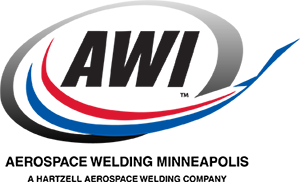Exploring Aircraft Engine Parts: Cessna and Piper Planes
When it comes to aircraft like Cessna and Piper, understanding the intricacies of their engines is essential for pilots, mechanics, and aviation enthusiasts. Let’s dive into the critical components that keep these planes soaring through the skies. And don't forget, Air Power, Inc. is your go-to spot for aircraft engine parts and other aircraft components!

1. Lycoming and Continental Engines
- Lycoming Engines: Lycoming engines are prevalent in many small aircraft. They come in various models, each tailored for specific applications. These engines power both Cessna and Piper planes.
- Continental Engines: Continental engines are another popular choice. They offer reliability and performance across different aircraft types.
2. Engine Parts
Let’s explore some essential engine parts:
Cylinders
- Function: Cylinders house the pistons and facilitate combustion.
- Materials: Typically made of aluminum alloy.
- Maintenance: Regular inspections and compression tests are crucial.
Pistons
- Role: Pistons move up and down within the cylinders, converting fuel energy into mechanical motion.
- Materials: Aluminum alloy or steel.
- Maintenance: Piston rings and clearances must be monitored.
Crankshaft
- Function: The crankshaft transforms piston motion into rotational energy.
- Materials: High-strength steel.
- Maintenance: Balancing and lubrication are critical.
Camshaft
- Purpose: The camshaft controls valve timing.
- Maintenance: Regular inspection for wear and proper functioning.
Valves
- Intake Valves: Allow fuel-air mixture into the cylinders.
- Exhaust Valves: Release exhaust gases.
- Maintenance: Valve clearance adjustments are necessary.
Connecting Rods
- Role: Connecting rods link the pistons to the crankshaft.
- Materials: Forged steel.
- Maintenance: Regular checks for wear and alignment.
Oil System
- Components: Includes oil pump, filter, and cooler.
- Function: Lubricates moving parts and dissipates heat.
- Maintenance: Regular oil changes and filter replacements.
Ignition System
- Spark Plugs: Ignite the fuel-air mixture.
- Magneto: Generates high-voltage electrical pulses.
- Maintenance: Regular spark plug inspections and timing adjustments.
Fuel System
- Fuel Injectors: Deliver precise fuel amounts.
- Carburetors: Mix fuel and air.
- Maintenance: Clean fuel filters and check for leaks.
Exhaust System
- Components: Includes exhaust pipes and mufflers.
- Function: Expels combustion gases.
- Maintenance: Inspect for cracks and leaks.
Cooling System
- Radiators or Oil Coolers: Regulate engine temperature.
- Maintenance: Monitor coolant levels and check for leaks.
Accessory Drives
- Alternators and Generators: Charge the aircraft’s electrical system.
- Vacuum Pumps: Power instruments.
- Maintenance: Regular checks for wear and proper functioning.
Proper maintenance and understanding these engine parts contribute to safe and efficient flights. Whether you’re a pilot, mechanic, or have a general passion for aviation, appreciating the inner workings of these engines enhances your connection to the skies above.
YOU MAY ALSO LIKE:
Understanding the Aircraft Spark Plug - When it comes to the intricate machinery of aircraft engines, even the smallest components play a crucial role.
A Pilot's Guide to Pre-Flight Checks - This guide provides an in-depth exploration of the nuances and intricacies of pre-flight inspections, empowering you to perform them with absolute confidence.
Pilot Certifications Part 1: Sport Pilot Certificate - Each type of pilot certificate has different eligibility, training, experience, and testing requirements.
*SHOP ENGINE PARTS HERE!*
Find What You Need at Air Power Inc.!
Questions? Our team is ready to assist you anytime. Your aviation success starts at Air Power!
CONTACT US






